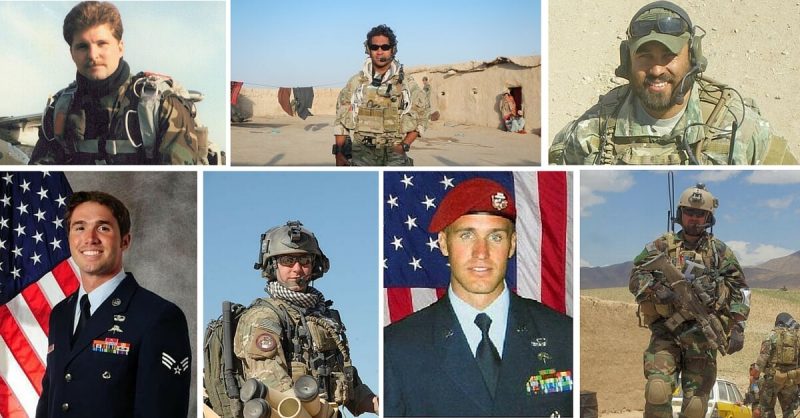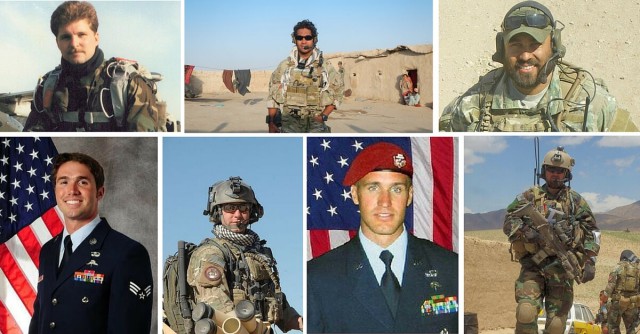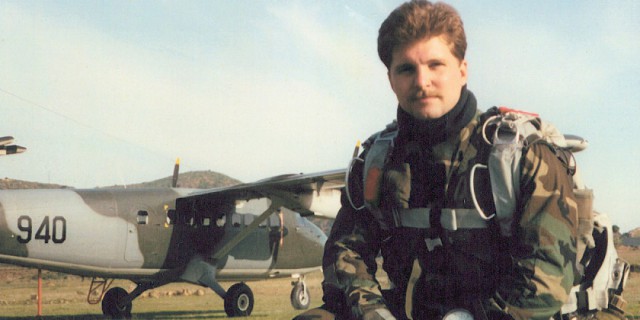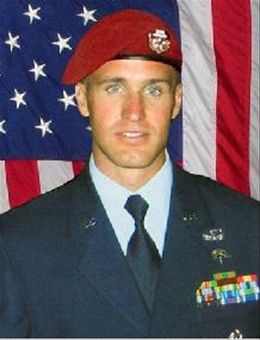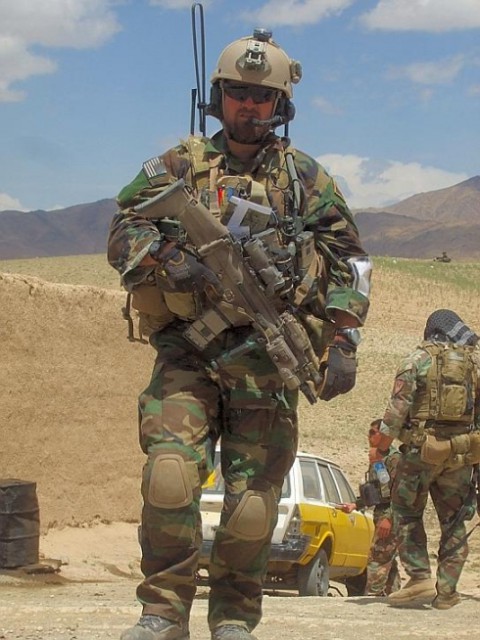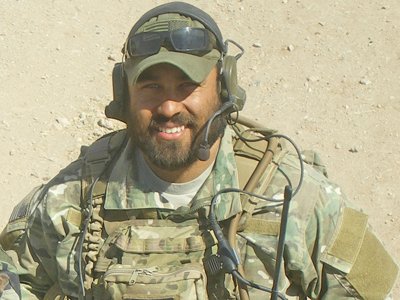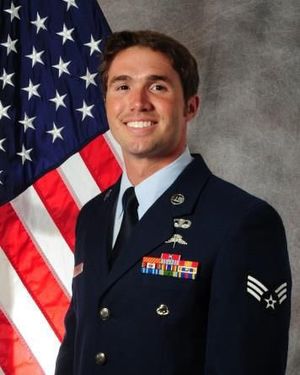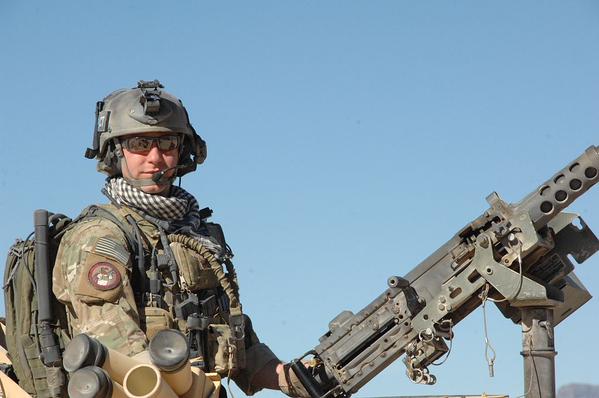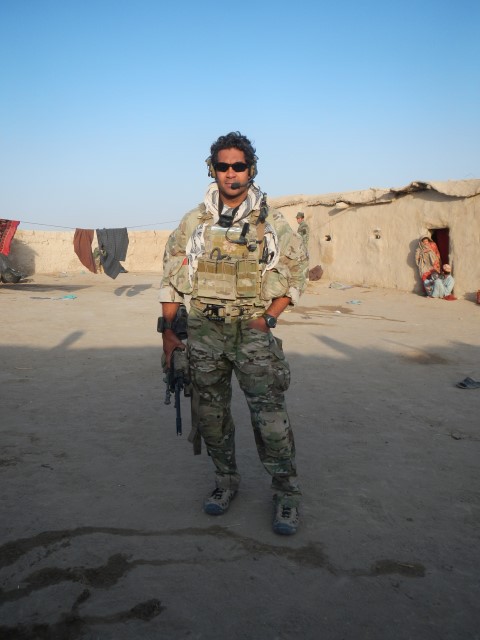The US’s highest military honor, the Medal of Honor, has not been awarded to a member of the US Air Force since the Vietnam War. The award has been given to a number of soldiers and operatives who have shown immense bravery and courage during war time and sometimes made the ultimate sacrifice. The Air Force was the only service that did not have a member being honored with the medal during the Iraq and Afghanistan wars, now that might all change.
Seven crewmen who have served since the terrorist attacks of September 11, 2001, have been honored with the US Air Force Cross, the second highest award in the Air Force. One of those crewmen is being put forward for recommendation by the Air Force Special Operations Command to receive the Medal of Honor.
The recommendation is being made after US Air Force Secretary, Deborah Lee James gave orders for a review of awards to Air Force crewmen who have served within special operations. These include the Para-rescue men and combat controllers.
New information has surfaced about one of the US Air Force Cross honorees and they will now be put forward for the highest honor within the US military. At this stage the crewman has not been named, however it is one of the seven and these include:
Tech. Sergeant John Chapman (awarded posthumously)
On 4 March 2002 in the vicinity of Gardez, in the eastern highlands of Afghanistan, during his helicopter insertion for a reconnaissance and time sensitive targeting close air support mission, Sergeant Chapman’s aircraft came under heavy machine gun fire and received a direct hit from a rocket propelled grenade which caused a United States Navy sea-air-land team member to fall from the aircraft.
Though heavily damaged, the aircraft egressed the area and made an emergency landing seven kilometers away. Once on the ground Sergeant Chapman established communication with an AC-130 gunship to insure the area was secure while providing close air support coverage for the entire team. He then directed the gunship to begin the search for the missing team member. He requested, coordinated, and controlled the helicopter that extracted the stranded team and aircrew members. These actions limited the exposure of the aircrew and team to hostile fire. Without regard for his own life Sergeant Chapman volunteered to rescue his missing team member from an enemy strong hold. Shortly after insertion, the team made contact with the enemy. Sergeant Chapman engaged and killed two enemy personnel. He continued to advance reaching the enemy position then engaged a second enemy position, a dug-in machine gun nest.
At this time the rescue team came under effective enemy fire from three directions. From close range he exchanged fire with the enemy from minimum personal cover until he succumbed to multiple wounds. His engagement and destruction of the first enemy position and advancement on the second position enabled his team to move to cover and break enemy contact. In his own words, his Navy sea-air-land team leader credits Sergeant Chapman unequivocally with saving the lives of the entire rescue team. Through his extraordinary heroism, superb airmanship, aggressiveness in the face of the enemy, and the dedication to the service of his country, Sergeant Chapman reflects the highest credit upon himself and the United States Air Force.
Senior Airman Jason Cunningham (awarded posthumously)
On 4 March 2002 in action near the village of Marzak in the Paktia Province of Afghanistan, Airman Cunningham was the primary Air Force Combat Search and Rescue medic assigned to a Quick Reaction Force tasked to recover two American servicemen evading capture in austere terrain occupied by massed Al Qaida and Taliban forces. Shortly before landing, his MH-47E helicopter received accurate rocket-propelled grenade and small arms fire, severely disabling the aircraft and causing it to crash land. The assault force formed a hasty defense and immediately suffered three fatalities and five critical casualties.
Despite effective enemy fire, and at great risk to his own life, Airman Cunningham remained in the burning fuselage of the aircraft in order to treat the wounded. As he moved his patients to a more secure location, mortar rounds began to impact within fifty feet of his position. Disregarding this extreme danger, he continued the movement and exposed himself to enemy fire on seven separate occasions. When the second casualty collection point was also compromised, in a display of uncommon valor and gallantry, Airman Cunningham braved an intense small arms and rocket-propelled grenade attack while repositioning the critically wounded to a third collection point.
Even after he was mortally wounded and quickly deteriorating, he continued to direct patient movement and transferred care to another medic. In the end, his distinct efforts led to the successful delivery of ten gravely wounded Americans to life-saving medical treatment. Through his extraordinary heroism, superb airmanship, aggressiveness in the face of the enemy, and in the dedication of his service to his country, Senior Airman Cunningham reflected the highest credit upon himself and the United States Air Force.
Captain Barry Crawford Junior
On 4 May 2010, near Laghman Province, Afghanistan, while attached to Army Special Forces Operational Detachment Alpha and their Afghan partner force, Captain Crawford conducted a helicopter assault into Hendor Village. Upon landing, Captain Crawford received reports that multiple groups of armed enemy were maneuvering into prepared fighting positions in the high ground around the village. As the assault force initiated clearance operations, they began to receive a high volume of accurate machine gun and sniper fire from an enemy force well over 100 fighters. As the assault force was attacked, Captain Crawford took decisive action to save the lives of three wounded Afghan soldiers and evacuate two Afghan soldiers killed in action.
Recognizing that the wounded Afghan soldiers would die without evacuation to definitive care, Captain Crawford took decisive action and ran out into the open in an effort to guide the helicopter to the landing zone. Once the pilot had eyes on his position, Captain Crawford remained exposed, despite having one of his radio antennas shot off mere inches form his face, while he vectored in the aircraft. Acting without hesitation, Captain Crawford then bounded across open terrain, engaged enemy positions with his assault rifle and called in AH-64 strafe attacks to defeat the ambush allowing the aid-and-litter teams to move toward the casualties. While the casualties were being moved the team’s exposed position once again came under attack from two enemy trucks that had moved into the area and were threatening the medical evacuation landing zone. As one of the aid-and-litter teams was pinned down by enemy fire, and the medical evacuation helicopter took direct hits from small arms fire, it departed with only four casualties leaving one wounded Afghan soldier on the ground. Captain Crawford developed, coordinated, and executed a plan to suppress the enemy, enabling the helicopter to return to the hot landing zone to retrieve the last casualty. While Captain Crawford’s element exfiltrated the village, the assault force conducted a two kilometer movement over steep terrain with little to no cover.
During this movement the ground force commander and Captain Crawford’s element were ambushed and pinned down in the open from multiple enemy fighting positions, some as close as 150 meters away. Without regard for his own life, Captain Crawford moved alone across open terrain in the kill zone to locate and engage enemy positions with his assault riffle while directing AH-64 30-mm. strafe attacks. Continuing to move the team further over 1.5 kilometers of steep terrain with minimal cover, Captain Crawford again engaged the enemy with his assault rifle while integrating AH-64s and F-15E’s in a coordinated air-to-ground attack plan that included strafing runs along with 500 and 2,0000-pound bomb and Hellfire missile strikes. Throughout the course of the ten hour firefight, Captain Crawford braved effective enemy fire and consciously placed himself at grave risk on four occasions while controlling over 33 aircraft and more than 40 airstrikes on a well-trained and well-prepared enemy force. His selfless actions and expert airpower employment neutralized a numerically superior enemy force and enabled friendly elements to exfiltrate the area without massive casualties. Through his extraordinary heroism, superb airmanship, and aggressiveness in the face of the enemy, Captain Crawford has reflected great credit upon himself and the United States Air Force.
Technical Sergeant Robert Gutierrez Junior
On 5 October 2009 in the Heart Province, Afghanistan, while assigned as a combat controller to an Army Special Forces Detachment, Sergeant Gutierrez and his team conducted a high-risk nighttime raid to capture the number two Taliban leader in the region. During the initial assault, the team was attacked with a barrage of rifle and heavy machine-gun fire from a numerically superior and determined enemy force. Sergeant Gutierrez was shot in the chest, his team leader was shot in the leg, and the ten-man element was pinned down in a building with no escape route.
In great pain and confronting the very real possibility that he would die, Sergeant Gutierrez seized the initiative and refused to relinquish his duties as joint terminal attack controller. Under intense fire, he engaged Taliban fighters with his M-4 rifle and brought airpower to bear, controlling three “danger close” A-10 strafing runs with exceptional precision against enemy forces just 30 feet away. After the first A-10 attack, the team medic performed a needle decompression to re-inflate Sergeant Gutierrez’s collapsed lung, allowing him to direct the next two strafe runs which decimated the enemy force and allowed the team to escape the kill zone without additional casualties.
Throughout the four-hour battle, Sergeant Gutierrez’s valorous actions, at great risk to his own life, helped save the lives of his teammates and dealt a crushing blow to the regional Taliban network. Through his extraordinary heroism, superb airmanship, and aggressiveness in the face of the enemy, Sergeant Gutierrez reflected the highest credit upon himself and the United States Air Force..
Senior Airman Dustin Temple
From from 27 to 29 September 2014 in Helmand Province, Afghanistan, while attached to a United States Special Forces team, Airman Temple displayed extraordinary bravery and complete disregard for his own life as he and his teammates assaulted an insurgent safe haven. As overwhelming hostile fire continually suppressed his team, Airman Temple broke the assault on many occasions with danger close air support from F-16s, AH-1s, AC-130s and an MQ-1. Following a teammate being gravely wounded by a sniper, he put himself directly in the line of fire, and dragged his wounded teammate from the rooftop.
With the evacuation helicopter inbound, Airman Temple again risked his own life to save his teammate, by carrying him across one hundred meters of open terrain. Despite overwhelming and accurate enemy machine gun fire, he remained on the open landing zone, providing covering fire while his teammates pulled back. After he returned to the compound, enemy fighters surged within 40 meters after intercepted communications stated, “Take the Americans alive.” Airman Temple immediately directed F-16s in danger close strafing runs, killing one insurgent and repelling the assault. As supplies dwindled, he braved open terrain again to retrieve critical ammunition from a re-supply helicopter. With continuous machine gun fire, he and a teammate sprinted into the open and dragged the supplies off the aircraft; however, unable to carry the entire load, they withdrew back to cover. Airman Temple called in danger close fires from F-16s to cover his team as they went out to retrieve the remaining ammunition.
Despite the continuous machine gun fire, Airman Temple and two teammates again ran into open terrain to retrieve the remainder of the supplies for a second time. At the end of the 48-hour engagement, he controlled 28 attack helicopters and 20 fixed wing assets for a total of 26 engagements while safely employing munitions at danger close range 75 times. Airman Temple’s heroic and selfless actions directly resulted in confirmed 10 enemy fighters killed, and another eight estimated killed, while saving the lives of 38 friendly forces. Through his extraordinary heroism, superb Airmanship, and aggressiveness in the face of the enemy, Airman Temple has reflected the highest credit upon himself and the United States Air Force.
Technical Sergeant Zachary J. Rhyner
On 6 April 2008 in the Nuristan Province, Afghanistan, while assigned as Special Tactics Combat Controller, Airman Rhyner executed a day rotary-wing infiltration with his Special Forces team to capture high-value insurgents in a village on the surrounding mountains. While climbing near vertical terrain to reach their objective, the team was attacked in a well-coordinated and deadly ambush.
Devastating sniper, machine gun, and rocket-propelled grenade fire poured down on the team from elevated and protected positions on all sides, immediately pinning down the assault force. Without regard for his life, Airman Rhyner placed himself between the most immediate threats and provided suppressive fire with his M-4 rifle against enemy fire while fellow teammates were extracted from the line of fire. Airman Rhyner bravely withstood the hail of enemy fire to control eight United States Air Force fighters and four United States Army attack helicopters.
Despite a gunshot wound to the left leg and being trapped on a 60-foot cliff under constant enemy fire, Airman Rhyner controlled more than 50 attack runs and repeatedly repelled the enemy with repeated danger close air strikes, several within 100 meters of his position. Twice, his actions prevented his element from being overrun during the intense 6 and a half hour battle. Through his extraordinary heroism, superb airmanship, and aggressiveness in the face of the enemy, Airman Rhyner reflected the highest credit upon himself and the United States Air Force.
Master Sergeant Ivan Ruiz
On 10 December 2013 in the Kandahar Province, Afghanistan, Sergeant Ruiz attached to a team of Army Special Forces personnel and Afghan Commandos conducting a raid in denied terrain. After a point blank engagement with four insurgents, Sergeant Ruiz’s team continued to clear a small compound of resistance while maneuvering towards neutralized insurgents to search their remains. Isolated from the 14 man element, Sergeant Ruiz and two teammates encountered a vicious insurgent crossfire, sweeping the courtyard with small arms fire and throwing hand grenades from barricaded strongpoints.
Sergeant Ruiz eliminated one enemy fighter with well-aimed carbine fire, while enemy fire wounded his two comrades, rendering them immobile and exposed to enemy fire. Alone in the courtyard, Sergeant Ruiz completely disregarded his personal safety and refused to withdraw to cover. Single-handedly suppressing enemy fire until reinforcements arrived, Sergeant Ruiz pressed ahead under intense fire to reach his wounded comrades. Drawing fire from the enemy and returning fire to prevent the insurgents from maneuvering, he was gradually driven into a prone fighting position by the sheer volume of enemy fire. His refusal to leave the courtyard prevented enemy fighters from engaging his wounded teammates with direct fire weapons, though enemy grenades impacted within five meters of Sergeant Ruiz’s position. Eventually joined by teammates, Sergeant Ruiz advanced through a hail of machine gun fire and grenades to drag a wounded teammate back to a position of relative cover and concealment.
While still dangerously exposed to gunfire raking the compound, Sergeant Ruiz administered life-saving trauma care to his teammates while wearing night vision goggles. Sergeant Ruiz’s heroic actions through intense enemy fire saved the lives of two teammates and contributed to eleven insurgents killed. Through his extraordinary heroism, superb airmanship, and aggressiveness in the face of the enemy, Sergeant Ruiz reflected the highest credit upon himself and the United States Air Force..
All images courtesy of the US Air Force
